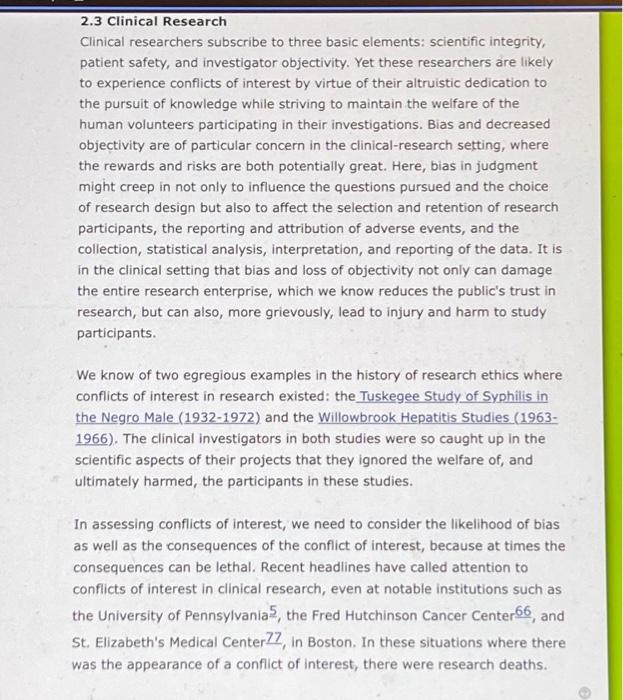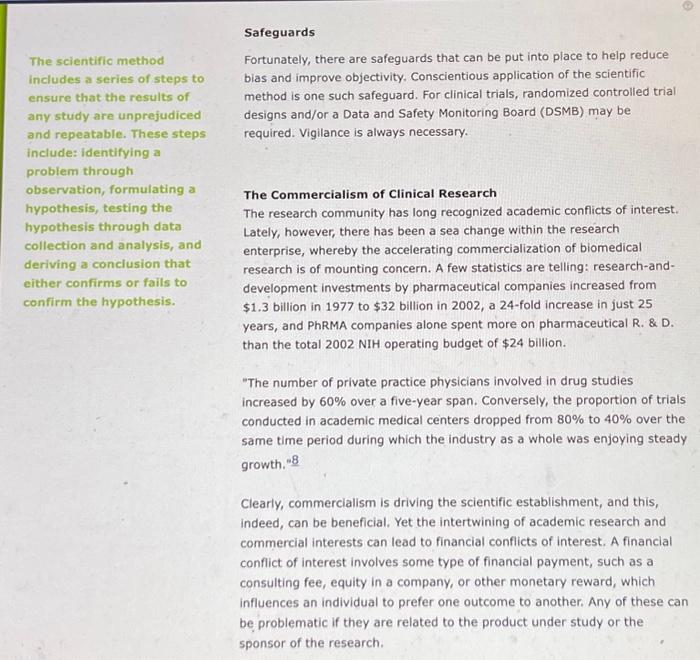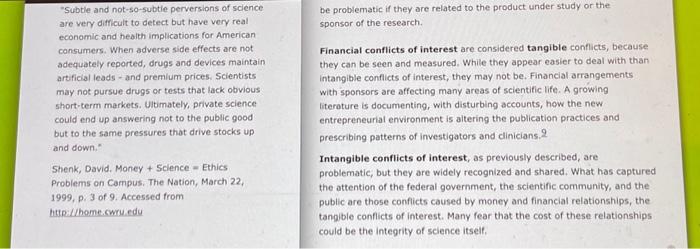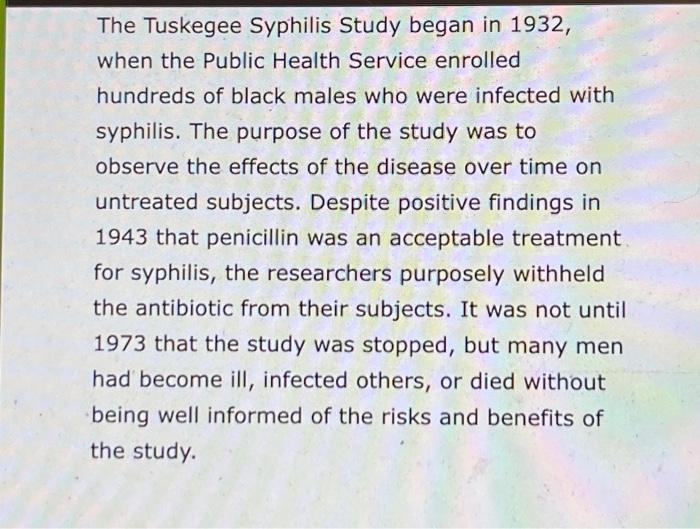Please read and summarize the two cases 1) the tuskegg study and 2) the whillow hepatitis by highlighting the ethical violations in these cases. for a like and good rating! Thanks :)
2.3 Clinical Research Clinical researchers subscribe to three basic elements: scientific integrity, patient safety, and investigator objectivity. Yet these researchers are likely to experience conflicts of interest by virtue of their altruistic dedication to the pursuit of knowledge while striving to maintain the welfare of the human volunteers participating in their investigations. Bias and decreased objectivity are of particular concern in the clinical-research setting, where the rewards and risks are both potentially great. Here, bias in judgment might creep in not only to influence the questions pursued and the choice of research design but also to affect the selection and retention of research participants, the reporting and attribution of adverse events, and the collection, statistical analysis, interpretation, and reporting of the data. It is in the clinical setting that bias and loss of objectivity not only can damage the entire research enterprise, which we know reduces the public's trust in research, but can also, more grievously, lead to injury and harm to study participants. We know of two egregious examples in the history of research ethics where conflicts of interest in research existed: the Tuskegee Study of Syphilis in the Negro Male (1932-1972) and the Willowbrook Hepatitis Studles (19631966). The clinical investigators in both studies were so caught up in the scientific aspects of their projects that they ignored the welfare of, and ultimately harmed, the participants in these studies. In assessing conflicts of interest, we need to consider the likelihood of bias as well as the consequences of the conflict of interest, because at times the consequences can be lethal. Recent headlines have called attention to conflicts of interest in clinical research, even at notable institutions such as the University of Pennsylvania, the Fred Hutchinson Cancer Center 66 , and St. Elizabeth's Medical Center77, in Boston. In these situations where there was the appearance of a conflict of interest, there were research deaths. Safeguards The scientific method includes a series of steps to ensure that the results of any study are unprejudiced and repeatable. These steps include: identifying a problem through observation, formulating a hypothesis, testing the hypothesis through data collection and analysis, and deriving a conciusion that either confirms or fails to confirm the hypothesis. Fortunately, there are safeguards that can be put into place to help reduce bias and improve objectivity. Conscientious application of the scientific method is one such safeguard. For clinical trials, randomized controlled trial designs and/or a Data and Safety Monitoring Board (DSMB) may be required. Vigilance is always necessary. The Commercialism of Clinical Research The research community has long recognized academic conflicts of interest. Lately, however, there has been a sea change within the research enterprise, whereby the accelerating commercialization of biomedical research is of mounting concern. A few statistics are telling: research-anddevelopment investments by pharmaceutical companies increased from $1.3 billion in 1977 to $32 billion in 2002, a 24 -fold increase in just 25 years, and PhRMA companies alone spent more on pharmaceutical R. \& D. than the total 2002NIH operating budget of $24 billion. "The number of private practice physicians involved in drug studies increased by 60% over a five-year span. Conversely, the proportion of trials conducted in academic medical centers dropped from 80% to 40% over the same time period during which the industry as a whole was enjoying steady growth. "8 Clearly, commercialism is driving the scientific establishment, and this, indeed, can be beneficial. Yet the intertwining of academic research and commercial interests can lead to financial conflicts of interest. A financial conflict of interest involves some type of financial payment, such as a consulting fee, equity in a company, or other monetary reward, which influences an individual to prefer one outcome to another. Any of these can be problematic if they are related to the product under study or the sponsor of the research. "Subtle and not-so-subtie perversions of science are very difficuit to detect but have very real economic and health implications for American consumers. When adverse side effects are not adequately reported, drugs and devices maintain artificial leads - and premlum prices. Scientists may not pursue drugs or tests that lack obvious short-term markets. Ultimately, private science could end up answering not to the public good but to the same pressures that drive stocks up and down," Strenk, David. Money + Sclence = Ethics Problems on Campus. The Nation, March 22, 1999, P. 3 of 9 . Accessed from http:lhomecwry.edu be problematic if they are related to the product under study or the sponsor of the research. Financial conflicts of interest are considered tangible conflicts, because they can be seen and measured. While they appear easier to deal with than intangible conflicts of interest, they may not be. Financial arrangements with sponsors are affecting many areas of scientific life. A growing literoture is documenting, with disturbing accounts, how the new entrepreneurial environment is altering the publication practices and prescribing patterns of investigators and clinicians. 9 Intangible conflicts of interest, as previously described, are problematic, but they are widely recognized and shared, What has captured the attention of the federal government, the scientific community, and the public are those conflicts caused by money and financial relationships, the tangible conflicts of interest. Many fear that the cost of these relationships could be the integrity of science itself. The Tuskegee Syphilis Study began in 1932, when the Public Health Service enrolled hundreds of black males who were infected with syphilis. The purpose of the study was to observe the effects of the disease over time on untreated subjects. Despite positive findings in 1943 that penicillin was an acceptable treatment for syphilis, the researchers purposely withheld the antibiotic from their subjects. It was not until 1973 that the study was stopped, but many men had become ill, infected others, or died without being well informed of the risks and benefits of the study. From 1956 to 1972 , Staten Island's Willowbrook State School for the Retarded ran a study using mentally retarded children as its subjects. The Willowbrook Hepatitis Study infected these children with a hepatitis virus in order to document its effects on the body and its reactions to potential vaccines











